Dinosaur Fossils (By U.S. State!)


Most people are familiar with their state’s official flower and flag, but did you know that almost every state has an official fossil as well?
These state symbols are a representation of a territory’s unique characteristics and provide a glimpse into the area’s distant history. Thus, we dig up the details on these prehistoric remains and how each U.S. state got its specific designation.
What Is a State Fossil?
Fossils are the preserved remains of the organisms of our past. These traces of ancient life can include bones, shells, petrified wood, and even the entire organism (such as insects trapped in amber).
According to the National Park Service, fossils “are a tangible connection to life, landscapes, and climates of the past. They show us how life, landscapes, and climate have changed over time and how living things responded to those changes.”
As such, fossils are important to our history as a planet which, in turn, contributes to each country and state in the world.
States Without a State Fossil
Not all states have an official state fossil. This is due to a myriad of reasons. Some states, like Texas and Arkansas, do not have a state fossil, but they do have a state stone and a state dinosaur.
Other places like Rhode Island were below sea level during the age of dinosaurs, which made the preservation of fossils difficult.
Finally, states like Hawaii and New Hampshire are lacking fossils because the regions are composed of igneous rock.
This type of mass forms when lava or magma cools and solidifies. Unfortunately, the remains of past plants and animals could not survive the extreme heat and pressure of these materials so fossils do not exist in this type of rock.
Currently, there are eight states without this state designation. These include Arkansas, Florida, Hawaii, Iowa, Minnesota, New Hampshire, Rhode Island, and Texas.
However, two of these states are proposing official fossils at this time. Iowa proposed in 2018 that Crinoids should become the state fossil, but nothing has been made official.
Conversely, Rhode Island proposed that trilobites be their official fossil in 2022. This decision has already been passed in the House of Representatives. It will now go to the Senate for final approval. Lastly, while Florida does not have a designated fossil, its state stone is agatized coral, which is technically fossilized coral.
Alabama State Fossil
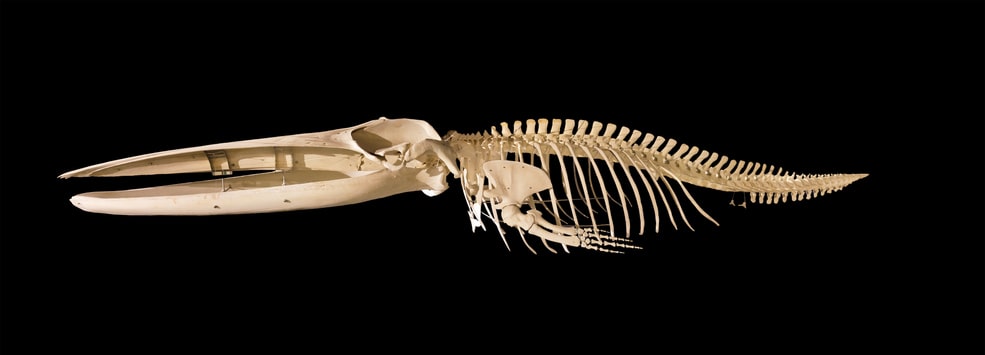
Common Name: Primitive Whale
Scientific Name: Basilosaurus ketoses
Age: Eocene
First Discovered: Early 1830s
The Basilosaurus cetoides ("king lizard") is an ancient whale that lived along the Alabama coast 30 to 35 million years ago. During the Eocene period, the climate was warm and humid, making these shallow waters the perfect place for these creatures to populate.
This is one of the main reasons why Alabama is known for its large collection of marine fossils.
The first fossil was found in the early 1830s. It was originally thought to be a prehistoric lizard, hence the meaning of the name. Measuring up to 60 feet long, it is believed that this aquatic giant was an apex predator. Interestingly enough, their vertebrae were originally used as construction materials for buildings as well as furniture.
A judge in Clarke County by the name of John G. Creagh sent specimens of these fossils to be examined by natural historian Richard Harlan and professor Richard Owen. Owen went on to determine that the Basilosaurus was a mammal and named the whale in 1840. However, it did not become the official state fossil of Alabama until over a century later in 1984.
Alaska State Fossil
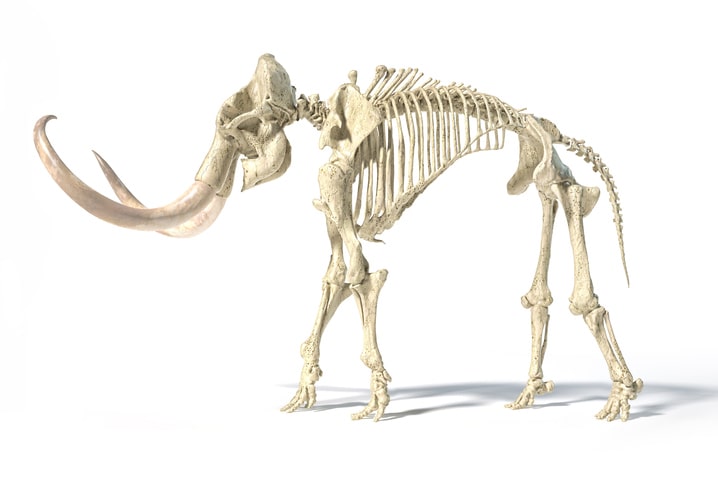
Common Name: Woolly Mammoth
Scientific Name: Mammuthus primigenius
Age: Pleistocene
First Discovered: 1796/1948
An ancient relative of African and Asian elephants, the wooly mammoth was first discovered in Europe in the late 1700s by the founding father of paleontology, Baron Georges Cuvier. It was not until 1948 that these creatures were found in Alaska. It is believed that these animals migrated from Siberia to Alaska over the Bering Land Bridge. The Pleistocene epoch was an Ice Age and therefore the sea levels were low, which makes this a plausible theory.
In 1986, the Mammuthus primigenius became Alaska’s official state fossil. The remains of these giant creatures can still be found across the nation’s “last frontier” to this day. These elephant-like animals were known for having tusks up to 15 feet in length, almost three times longer than their present-day descendants.
Arizona State Fossil
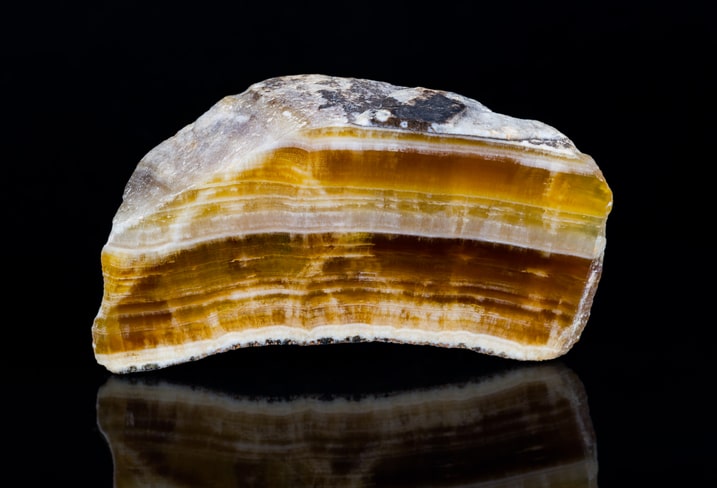
Common Name: Petrified Rainbow Wood
Scientific Name: Araucarioxylon arizonicum
Age: Triassic
First Discovered: 1889
Known for having the most petrified wood in the nation, it is no surprise that Araucarioxylon arizonicum is the state fossil of Arizona. In fact, the northeastern corner of the state is home to Petrified Forest National Park and the Rainbow Forest. This fossilized wood is filled with an array of vibrant colors, hence the name.
It was discovered by American paleobotanist Frank Hall Knowlton in 1889, but it did not take its official title until 1988. These massive pine trees were known to reach up to 200 feet in height with a diameter of two feet.
California State Fossil
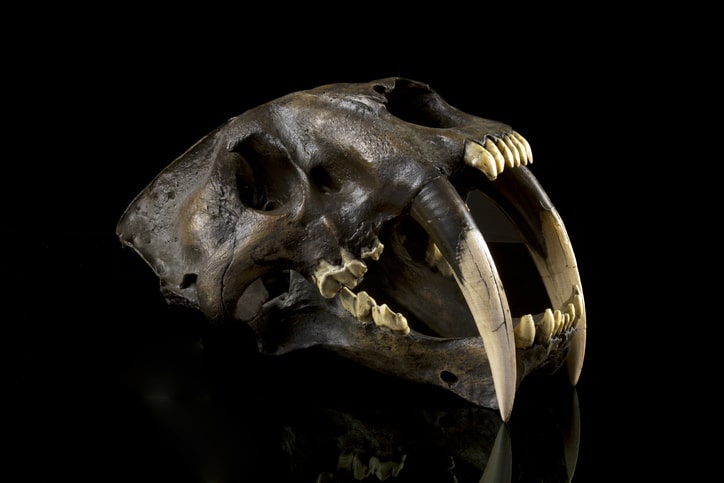
Common Name: Saber-Tooth Tiger or Saber-Toothed Cat
Scientific Name: Smilodon californicus
Age: Pleistocene
First Discovered: 1881
Deemed the Golden State’s official fossil in 1973, Smilodon californicus remains are predominantly found in the Rancho La Brea tar pits in Los Angeles. While these big-toothed cats are similar in size to the present-day lion, these felines were known for targeting slow-moving prey at close range. This made the tar pits an enticing place to hunt.
Surprisingly, these are not the most common mammals found in this region. They come in second to Dire Wolves, a species of extinct canines. The National Park Service notes that “the first Smilodon fossils were discovered in the 1830s in Brazil and were named Smilodon populator by Danish naturalist Peter Wilhelm Lund in 1842.” \North America’s first saber-toothed cat was found in Texas.
Colorado State Fossil
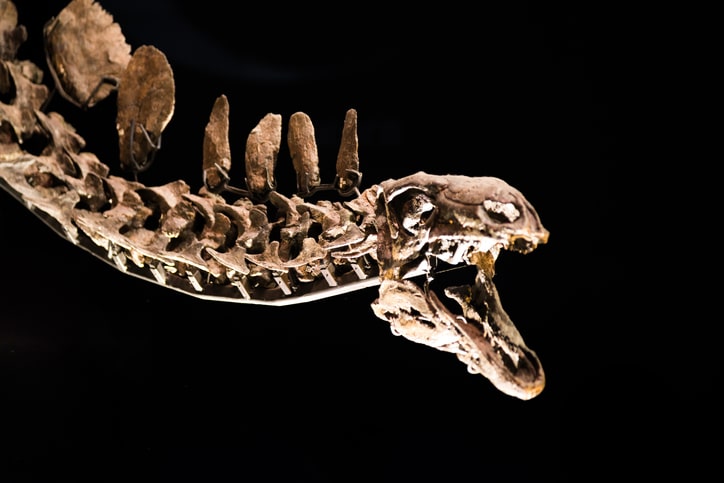
Common Name: Narrow-Faced Roof Lizard
Scientific Name: Stegosaurus stenops
Age: Jurassic
First Discovered: Late 1870s
Found just outside of Denver in the late 1800s, Stegosaurus stenops was a herbivore that weighed 10,000 to 14,000 pounds and spanned an impressive 29 feet in length. It is best known for its signature triangular bony plates situated along its spine as well as its powerful spiked tail.
During the Great Dinosaur Rush, otherwise referred to as the Bone Wars, Othniel Charles Marsh discovered this iconic dinosaur near Morrison, Colorado. This was one of 142 dinosaurs that were unearthed in Colorado, Nebraska, and Wyoming during this competitive fossil hunt between Marsh and rival paleontologist Edward Drinker Cope. It later became the state fossil of Colorado in 1982.
Connecticut State Fossil
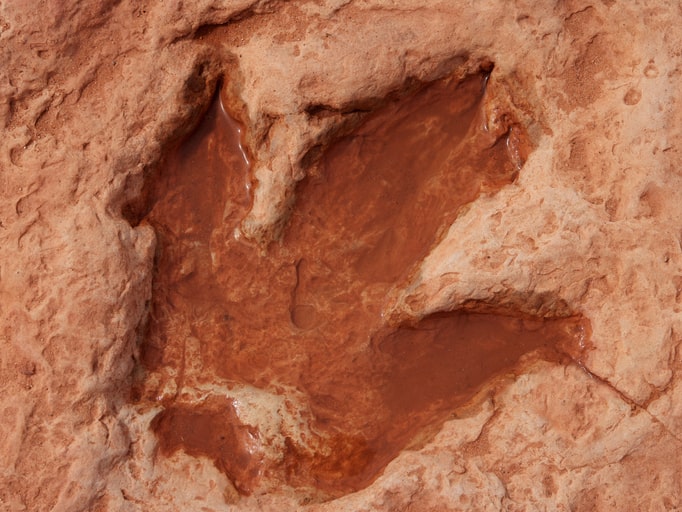
Common Name: Dinosaur Footprints or Dinosaur Tracks
Scientific Name: Eubrontes giganteus
Age: Jurassic
First Discovered: 1802/1966
The first documented discovery of Eubrontes giganteus was in Massachusetts in 1802 by Professor Edward Hitchcock. It was not until the mid-1960s that these three-toed tracks were unexpectedly found in Connecticut. This accidental unearthing of over 2,000 Eubrontes tracks occurred during the excavation for a new state building, which led to the creation of Dinosaur State Park.
It is believed that these footprints came from a Theropod dinosaur called the Dilophosaurus. These carnivorous creatures were known for walking on two legs and having shorter, clawed forelimbs. This is also the dinosaur that is known for killing the character Dennis Nedry in the movie Jurassic Park.
Delaware State Fossil
Common Name: Belemnite
Scientific Name: Belemnitella americana
Age: Cretaceous
First Discovered: 1832
Belemnitella americana is a type of mollusk that is most distantly related to a squid. This aquatic invertebrate was classified as a cephalopod in 1823 by Englishman John Samuel Miller. It was not until 1996 that they were named the Delaware state fossil due to their prevalence along the beaches of the Chesapeake and Delaware Canal.
Georgia State Fossil
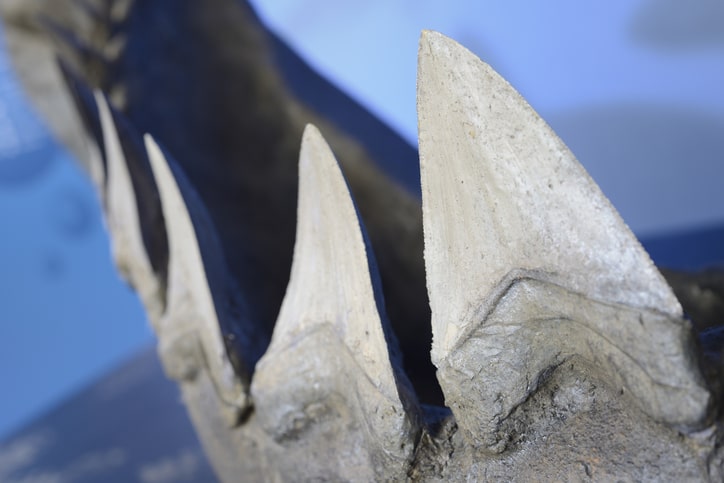
Common Name: Shark Tooth
Scientific Name: Carcharocles Megalodon
Age: Cretaceous to Miocene
First Discovered: 1835
While Georgia may not spark immediate images of the beach, this coastal state is home to Sharktooth Beach on Jekyll Island. Shark teeth are commonly found in this region. The Carcharocles Megalodon is a massive species of mackerel shark that is said to have been three times the length of the longest recorded great white.
This measures out to around 60 feet in length and it puts their gigantic pearly whites at approximately seven inches long. While these teeth have been found all over the world for almost two centuries, Georgia officially named these shark teeth as their state fossil in 1976.
Idaho State Fossil
Common Name: Hagerman Horse
Scientific Name: Equus simplicidens
Age: Pliocene
First Discovered: 1928
The Hagerman Horse was similar in stature to a Zebra, but it had a much smaller head that is comparable to a present-day donkey.
The first finding of the Equus simplicidens fossil is documented in 1928 by a cattle rancher named Elmer Cook in Hagerman, Idaho, hence the name of this species. Sixty years later, the Hagerman Fossil Beds National Monument was established to protect this amazing collection of fossils. This was the same year that this species was named the state fossil.
Illinois State Fossil
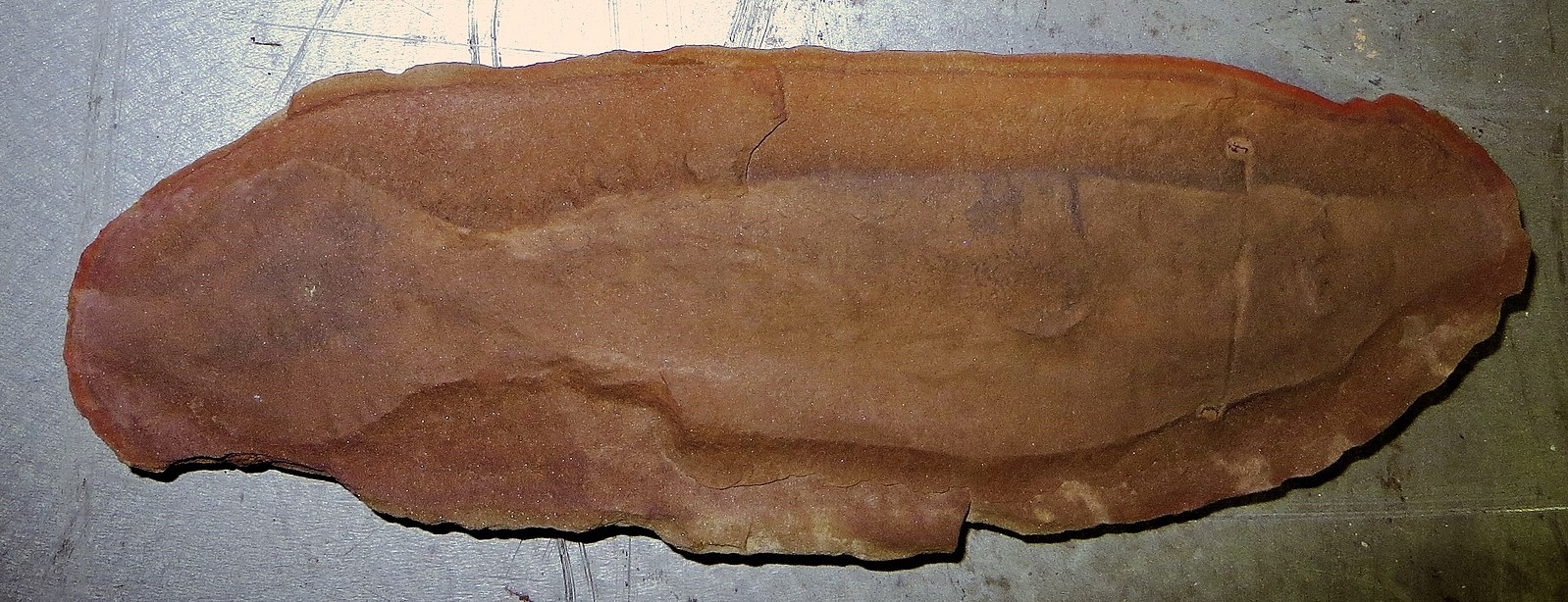
Common Name: Tully Monster
Scientific Name: Tullimonstrum gregarium
Age: Pennsylvanian Age
First Discovered: 1958
Many people do not realize that Illinois was once covered by a shallow sea. This allowed creatures like the Tullimonstrum gregarium to call this area their home. Affectionately called the “Tully Monster”, this vertebrate is a relative of the lamprey, a type of present-day jawless fish. They are estimated to have only measured around 15 centimeters in length and likely ate smaller marine animals.
This tiny sea creature was found in coal mining pits by Francis Tully in 1958. Interestingly enough, this animal’s remains are solely found in Illinois. This led the state to make it its official fossil in 1989.
Indiana State Fossil
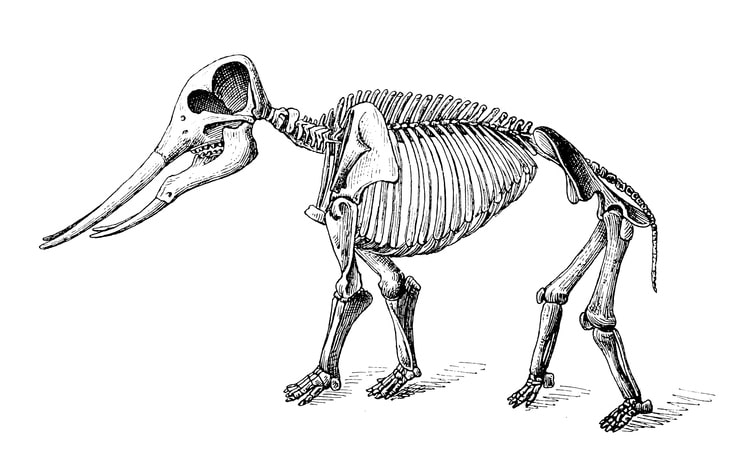
Common Name: American Mastodon
Scientific Name: Mammut americanum
Age: Pleistocene
First Discovered: 1705/1928
The American Mastodon officially became Indiana’s state fossil in the summer of 2022 after over a decade of debate. This smaller relative of the woolly mammoth was first discovered in New York in 1705 by a Dutch farmer and was later found in the Hoosier State over two centuries later. This is the state’s most common ice age fossil.
These herbivores differ from mammoths in size and diet, eating a wood-based fare including leaves and shrubs versus the mammoth’s diet of grasses. Indiana University researchers note that “Mastodon bones have been found in nearly every Indiana county”.
Kansas State Fossil
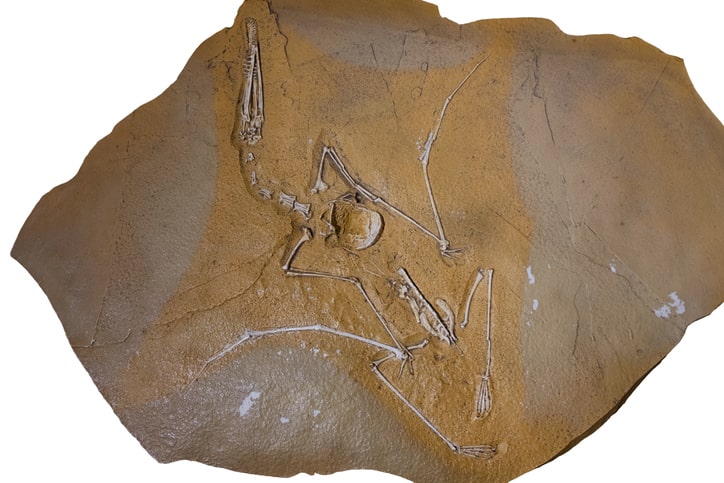
Common Names: Marine Reptile and Pterodactyl
Scientific Names: Tylosaurus and Pteranodon
Age: Cretaceous
First Discovered: 1876/1899
In 2014, the state of Kansas decided to designate both a marine fossil, the Tylosaurus, and a flight fossil, the Pteranodon. Both the Tylosaurus, discovered by W. O. Bourne, and the Pteranodon, discovered by Samuel Wendell Williston, were first found in Kansas in the late 1800s.
This is another state that was originally underwater during the cretaceous period making former marine life quite prevalent. The area is known for spectacularly preserved specimens thanks to their chalk formations.
Due to the marine environment, the Pteranodon lived off of fish and had pelican-like features. However, it had a much more impressive wingspan, measuring up to 23 feet in width. In contrast, the Tylosaurus is the largest of the marine reptiles called mosasaurs.
They spanned up to 45 feet in length and had a distinct flat tail, which allowed them to catch their prey at high speeds.
Kentucky State Fossil
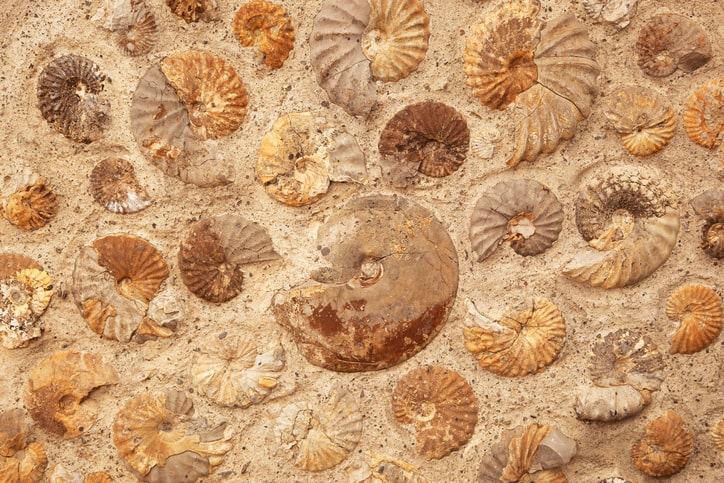
Common Name: Shellfish
Scientific Name: Brachiopod
Age: Paleozoic
Kentucky is another state that was covered with water, but this area was known for its deep oceans. This is why brachiopods are so prevalent in the region and were declared the state fossil in 1986.
Unlike other states that selected a specific species as their fossil, Kentucky is brimming with so many types of brachiopods that they decided to make the entire phylum their fossil of choice.
Louisiana State Fossil
Common Name: Petrified Palmwood
Scientific Name: Palmoxylon
Age: Oligocene
First Discovered: 1900s
Declared Louisiana’s state fossil in 1976, petrified palm wood is also the official state stone of Texas. This fossilized material is commonly found in the Toledo Bend area of these two states.
Petrified Palm Wood can be distinguished by the rod-like structures that appear as spots and lines within the fossil. Due to the material’s hard and rigid nature, this fossil was used by Native Americans to craft knives and other sharp tools.
Maine State Fossil
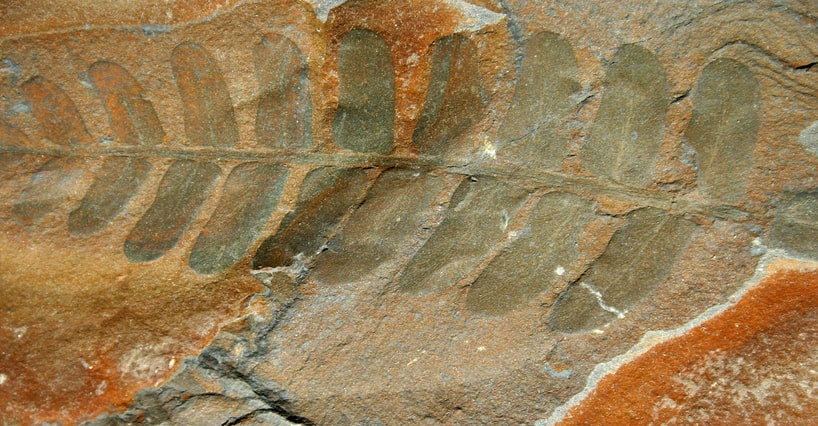
Common Name: Primitive Fossilized Plant
Scientific Name: Pertica quadrifaria
Age: Devonian
First Discovered: 1968
The fossilized remains of this primitive plant were first found in Baxter State Park in the northern portion of the state in the late 1960s.
This was likely one of the biggest plants of this epoch, reaching up to six feet in height. Maine is one of the few places in the world where these fossils are found, which is one of the main reasons why it was chosen as the official state fossil in 1985.
Maryland State Fossil

Common Name: Snail or Gastropod
Scientific Name: Ecphora gardnerae gardnerae Wilson
Age: Miocene
First Discovered: 1987
The Ecphora gardnerae gardnerae Wilson is a type of predatory gastropod that was named by Druid Wilson in 1987. Just seven years later, it became Maryland’s state fossil. This beautiful shell features raised whorls that give this shelled creature its name.
In fact, the word Ecphora means “bearing out” in Greek. In case you didn’t know, a gastropod is a type of snail. Like their present-day descendants, these creatures varied in size ranging from less than an inch to over four inches in length.
Massachusetts State Fossil
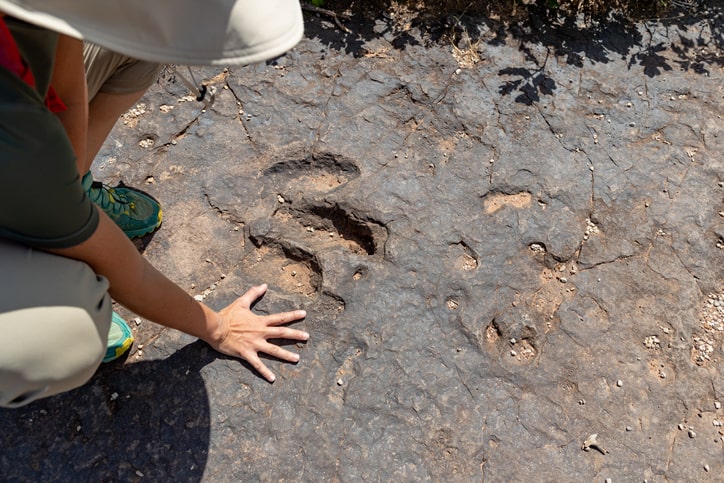
Common Name: Dinosaur Tracks
Scientific Name: N/A
Age: Jurassic
First Discovered: Early 1800s
Imprinted in slabs of sandstone, dinosaur tracks were first found in the early 1800s in the Granby region. A few decades later, a reservation was established in Holyoke to preserve more of these magnificent footprints that can still be appreciated to this day.
Hundreds of tracks from a variety of species of dinosaurs can be seen in this region. This spectacular landmark inspired the decision to make these the official state fossil in 1980.
Michigan State Fossil
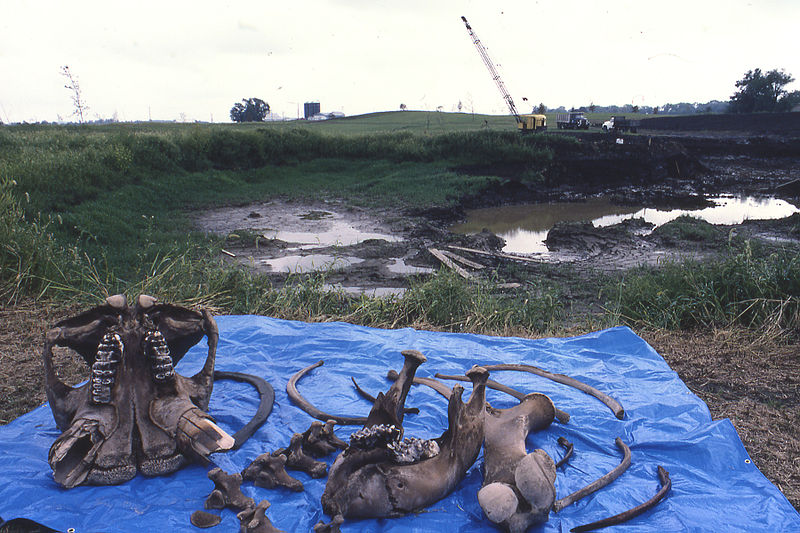
Common Name: Mastodon
Scientific Name: Mamut americanum
Age: Pleistocene
First Discovered: Early 1900s
Just like Indiana, the official state fossil of Michigan is the mastodon. However, they declared this animal as one of their state symbols twenty years earlier in 2002.
The University of Michigan's Museum of Natural History has a rare set of complete male and female mastodon skeletons on display. This duo was excavated in the Great Lakes State.
Michigan is also the only location where Mastodon tracks can be seen in the present day. People have been unearthing these giants throughout the state for going on a century.
One of the earliest documented recoveries was in 1927 when Kalamazoo street crews found the remains of these elephant-like animals.
Mississippi State Fossil
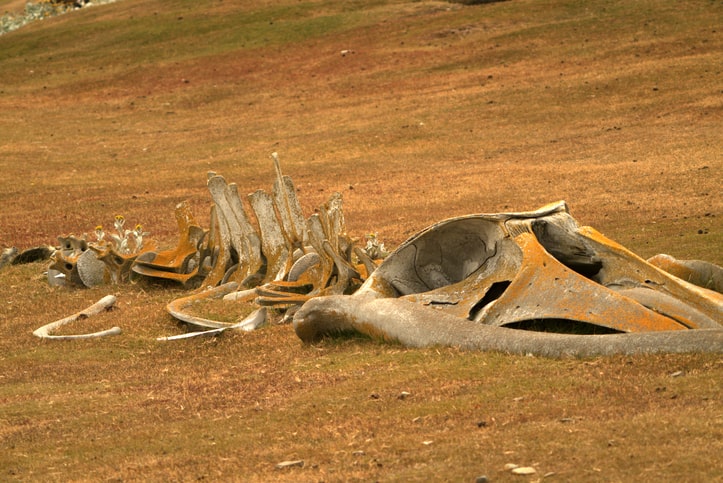
Common Name: Prehistoric Whales
Scientific Names: Basilosaurus cetoides and Zygorhiza kochii
Age: Eocene
First Discovered:
Mississippi was another sea-covered state during prehistoric times. Thus, like Alabama, the prevalence of marine life led Mississippi to name the Basilosaurus cetoides as well as its relative Zygorhiza kochii as their state fossils.
This occurred in 1981. As mentioned above, the Basilosaurus was quite large reaching up to 60 feet, but the Zygorhiza measured much smaller at around 20 feet. Both of these ancient whales were first found in the early 1830s across much of the southern United States.
Missouri State Fossil
Common Name: Crinoids
Scientific Name: Eperisocrinus missouriensis
Age: Pennsylvanian
First Discovered: 1890
Crinoids are a type of echinoderm related to present-day sand dollars and starfish. These beautiful marine animals are nicknamed ‘sea lilies’ due to the floral shape imprinted on them. This fossil was found by S.A. Miller and William Gurley in 1890. The duo originally named it Delocrinus missouriensis. This sea creature was reclassified in 1977 by J.J. Burke and then became the state fossil in 1989.
Montana State Fossil
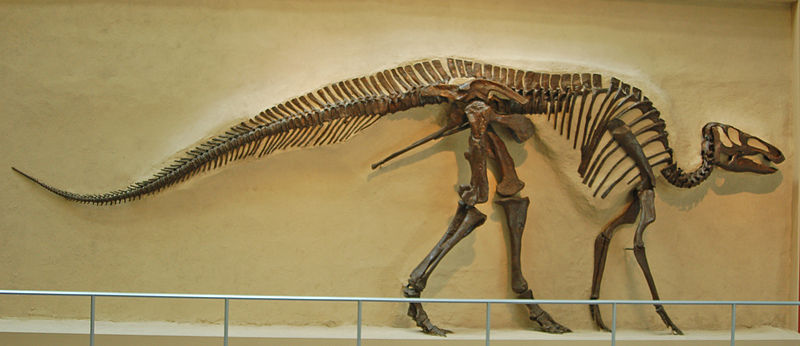
Common Name: Duck-Billed Dinosaur
Scientific Name: Maiasaura peeblesorum
Age: Cretaceous
First Discovered: Late 1970s
Maiasaura peeblesorum, also known as the duck-billed dinosaur, was a herbivore that lived in herds. These dinosaurs were known for nurturing and raising their young. This is fitting with a name that means ‘good mother lizard’.
This fact also proved that dinosaurs were more like birds than reptiles when it came to their parenting habits. These creatures reached up to 10,000 pounds and spanned 30 feet in length.
This fossil was first discovered by paleontologist Jack Horner and Bob Makela in the mid-1970s and it became the state fossil in 1985. Horner went on to consult on the Jurassic Park movies and this premise of dinosaurs raising their young was presented in the films.
Nebraska State Fossil
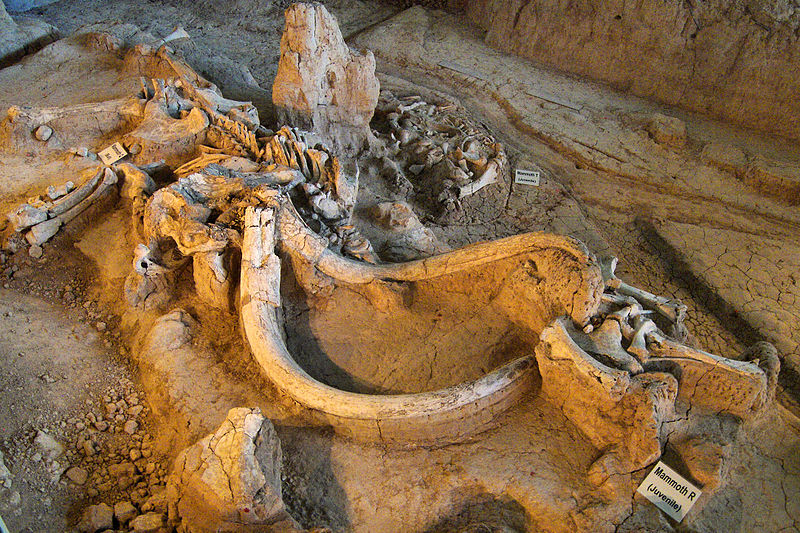
Common Name: Mammoth
Scientific Name: Mammuthus primigenius
Age: Pleistocene
First Discovered: 1867
Mammoth fossils were first found in Nebraska by Ferdinand Vandeveer Hayden in the late 1800s.
Since then, these giant fossils have been discovered across the majority of the state. Interestingly enough, the University of Nebraska State Museum in Lincoln is home to the world's largest fossil mammoth that they have named ‘Archie’.
Unlike the official state fossil, this specimen is a Mammuthus columbi, otherwise known as a Columbian Mammoth. This is one of the largest species of mammoths. Due to their prevalence in the state, this fossil became one of the state’s symbols in 1967.
Nevada State Fossil

Common Name: Ichthyosaur
Scientific Name: Shonisaurus popularis
Age: Triassic
First Discovered: 1928
Berlin-Ichthyosaur State Park is “home to the most abundant concentration, and largest known remains, of Ichthyosaurs, an ancient marine reptile that swam in a warm ocean that covered central Nevada 225 million years ago.”
These giants of the deep spanned up to 55 feet in length and ate other marine life. While this creature’s name means “fish lizard”, it is not considered a dinosaur. This marine reptile was first discovered in the late 1920s and became the state’s official fossil in 1977.
New Jersey State Fossil
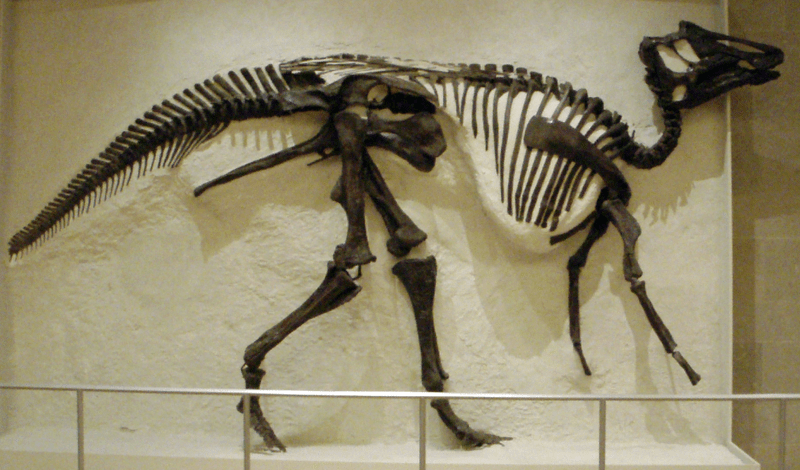
Common Name: Heavy Lizard or Duck-Billed Dinosaur
Scientific Name: Hadrosaurus foulkii
Age: Cretaceous
First Discovered: 1858
The Hadrosaurus foulkii was considered a gentle giant of its time. This vegetarian spanned 25 feet in length and is classified as another duck-billed dinosaur. It was also one of the first fully intact dinosaur skeletons to be found across the world.
William Parker Foulke unearthed this fossil in a marl pit in 1858, but it was not until 1991 that it became the official fossil of New Jersey.
New Mexico State Fossil
Common Name: Theropod Dinosaur
Scientific Name: Coelophysis bauri
Age: Triassic
First Discovered: 1881
The Land of Enchantment is also known for its theropods, but the Coelophysis bauri is much smaller than the other dinosaurs on this list. It measured around nine feet in length and likely only weighed about 50 pounds.
The first remains were found in 1881. However, it took eight more years for them to be classified by Edward D. Cope. Ironically, in a place deemed “Ghost Ranch”, a mass grave of these carnivores was found. It is theorized that this was the result of a flash flood.
A century after its initial discovery, this dinosaur became New Mexico’s state fossil.
New York State Fossil
Common Name: Sea Scorpion
Scientific Name: Eurypterus remipes
Age: Silurian
First Discovered: 1818
Eurypterus remipes is a type of extinct marine arthropod that measured up to eight feet in length, making it one the largest of the arthropods. It was known for preying upon other marine arthropods like trilobites.
These invertebrate animals are rare in most locations worldwide, but quite prevalent in New York State, making them an obvious choice for the state’s official fossil. This decision was made in 1984, almost 100 years after S. L. Mitchill first found this fossil.
North Carolina State Fossil
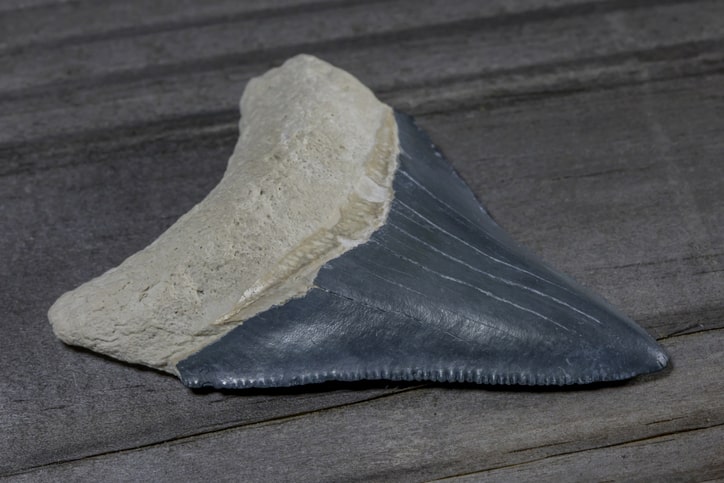
Common Name: Shark Tooth
Scientific Name: Carcharocles Megalodon
Age: Cenozoic to Pleistocene
The southeastern Atlantic coast is brimming with shark teeth so it should come as no surprise that North Carolina decided to make the Megalodon shark teeth as their state fossil, just like Georgia.
This occurred in 2013. Both Sharktooth Island and Topsail Beach are noteworthy spots for visitors to find these remarkable fossils.
North Dakota State Fossil
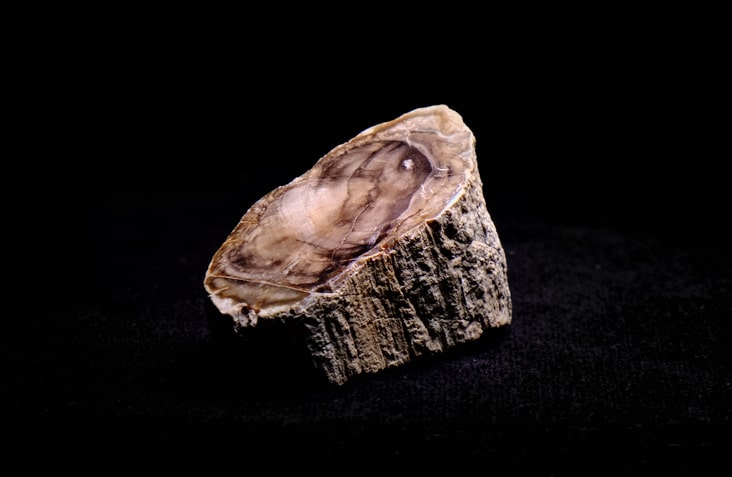
Common Name: Teredo Petrified Wood
Scientific Name: Teredo-Bored Araucarioxylon arizonicum
Age: Paleocene
First Discovered: 1967
Teredo navalis, otherwise known as shipworms, are a type of clam that was known to burrow into wood.
This was their source of food and shelter. Essentially underwater termites, these worm-like creatures would enter the wood and hollow out sections prior to fossilization. Then, mineral deposits filled these gaps, creating beautiful speckled patterns in the preserved wood. This was deemed the state fossil in 1967.
Ohio State Fossil
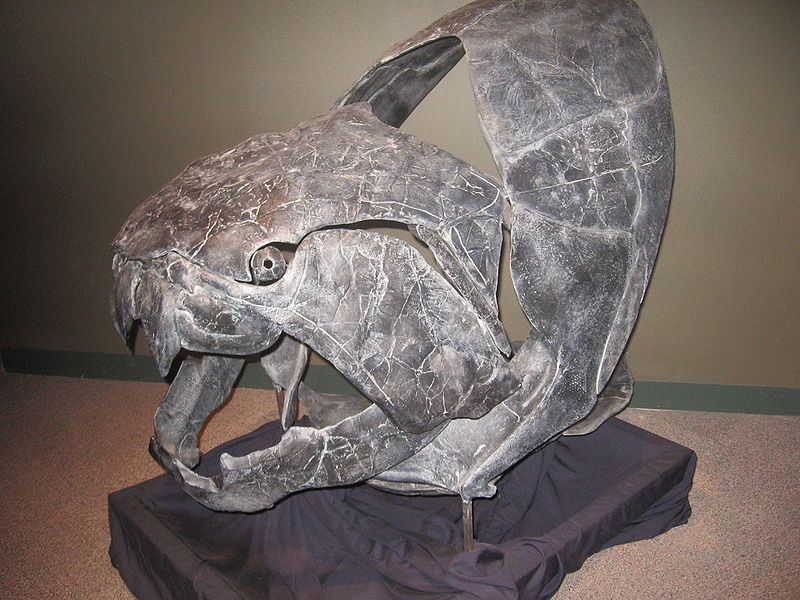
Common Name: Trilobite and Placoderm
Scientific Name: Isotelus trilobite and Dunkleosteus terrelli
Age: Ordovician and Devonian
First Discovered: 1920s
Ohio has two state fossils— an invertebrate fossil and a fossil fish. The trilobite was chosen in 1985 and is related to the present-day horseshoe crab.
These creatures have a hard-shelled exterior and an appearance similar to a beetle. While many species are quite small, the Isotelus trilobite is the largest of these marine anthropoids.
D. terrelli was selected as the official fossil fish in 2021. This underwater monster was known as a fierce predator with a powerful bite. This creature measured almost 30 feet in length. It was first found in Ohio in 1928 by Peter Bungart and Jesse Earl Hyde.
This ancient fish is noted as being one of the first documented jawed fish, making it an extraordinary find for the folks of Ohio. Most notably, this creature didn’t actually have any teeth. Instead, its jawbone acted as blades that sliced through its prey.
Oklahoma State Fossil
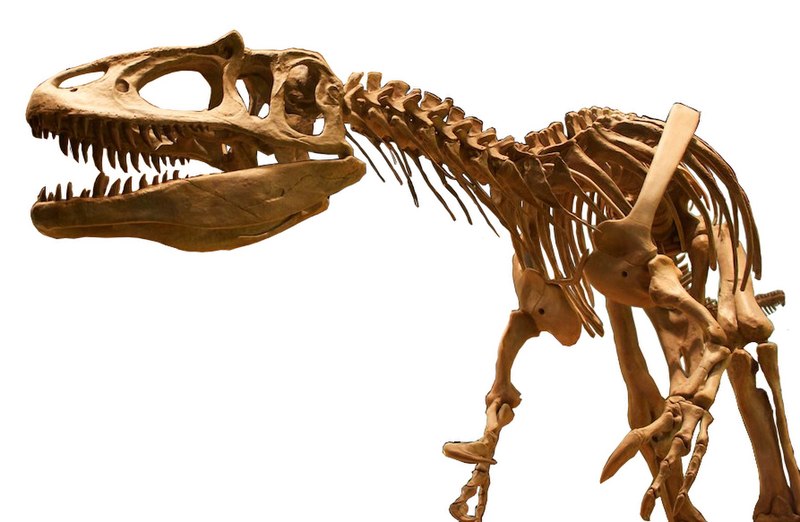
Common Name: Theropod Dinosaur
Scientific Name: Saurophaganax maximus
Age: Jurassic
First Discovered: 1931
Nicknamed the 'Lord of Lizard Eaters', the Saurophaganax maximus was another three-toed predator that was known to reach up to 43 feet in length and 13 feet in height, making it potentially larger than the infamous Tyrannosaurus rex.
This massive creature was first discovered by John Willis Stovall in the early 1930s and it was named Oklahoma’s state fossil in 2000.
Oregon State Fossil
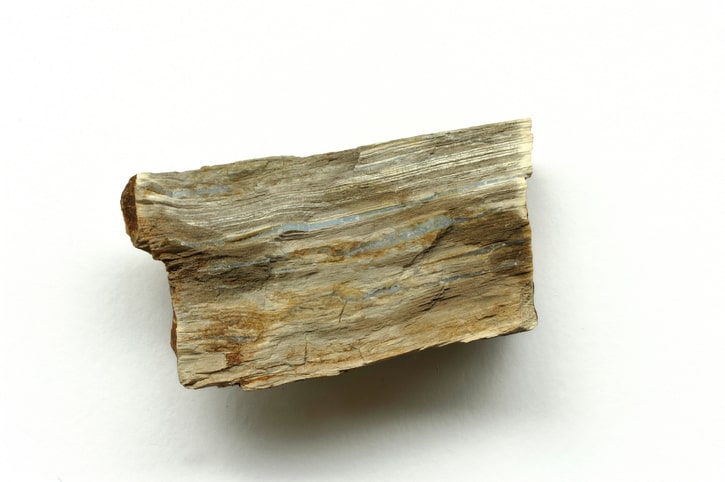
Common Name: Conifer Leaf from Dawn Redwood
Scientific Name: Metasequoia
Age: Miocene
First Discovered: 1939
The Metasequoia, more commonly referred to as the Dawn Redwood, is a conifer that was thought to be extinct until the early 1940s when it was rediscovered in China. This means that Oregon’s state symbol is considered a living fossil.
This critically endangered plant was once quite common in the Beaver State, thus they appointed it as their official fossil in 2005. Like the present-day redwood, these trees reached towering heights of up to 200 feet. This fossil was first discovered by Shigeru Miki in 1939.
Pennsylvania State Fossil
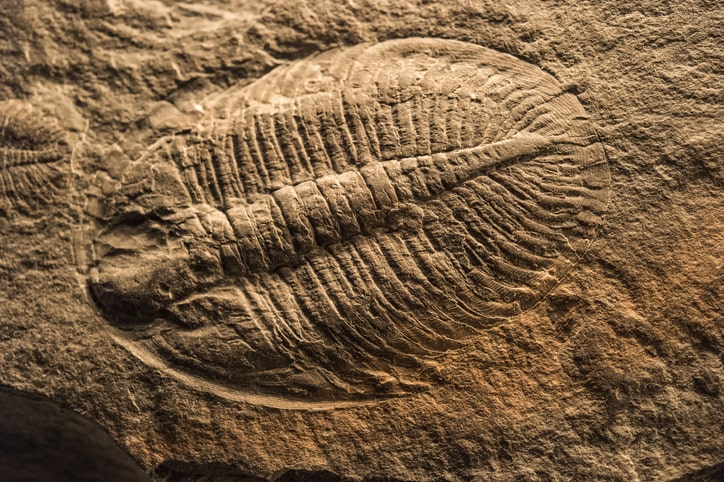
Common Name: Trilobite
Scientific Name: Phacops rana
Age: Devonian
First Discovered: 1832
Pennsylvania’s state fossil is yet another trilobite. Chosen in 1988, the Phacops rana is known for its large frog-like eyes. This is likely where their name was derived since ‘Rana’ means frog in Latin.
This arthropod is similar to the present-day pill bug or roly-poly due to its ability to roll up into a ball. In fact, many of their fossils can be found in this spherical shape.
This fossil was renamed Eldredgeops rana and was first documented by Jacob Green in his work "A Monograph of the Trilobites of North America".
South Carolina State Fossil
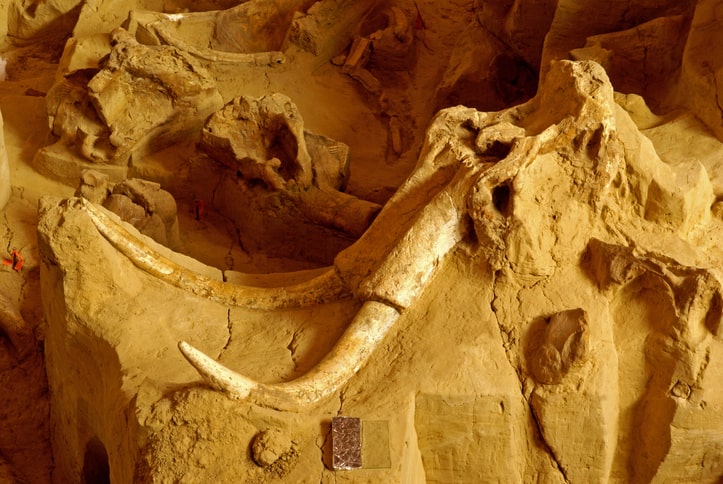
Common Name: Columbian Mammoth
Scientific Name: Mammuthus columbi
Age: Pleistocene
First Discovered: 1725
In 2014, the Columbian Mammoth was named South Carolina’s official fossil. However, this title was fraught with controversy.
The proposal that this ancient giant become the state fossil was made by an eight-year-old girl based on the fact that fossilized teeth from this creature were found in a South Carolina swamp back in 1725. Unfortunately, creationist lawmakers tried to block this designation, but it was made official after much debate.
South Dakota State Fossil
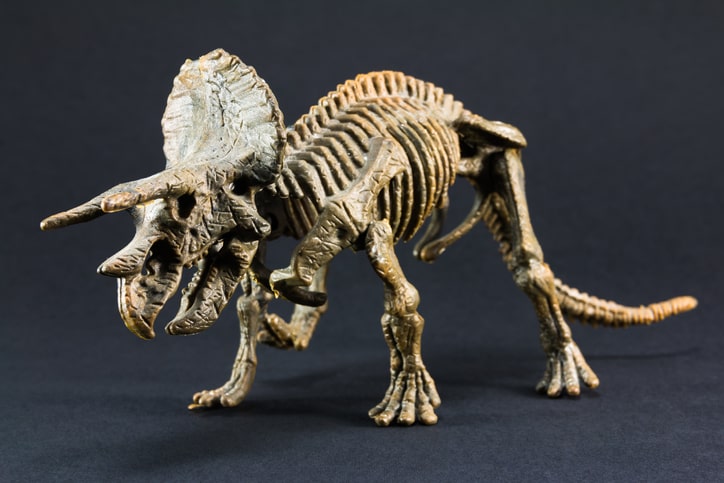
Common Name: Horned Dinosaur
Scientific Name: Triceratops
Age: Cretaceous
First Discovered: Late 1880s/1927
South Dakota’s state fossil is one of the most iconic dinosaurs in history. The Triceratops was known for its three horns, its large bird-like beak, and its enormous size (sometimes weighing over 20,000 pounds).
Othniel Charles Marsh, the same man to discover the Stegosaurus, also discovered the first Triceratops, giving the creature its famous name.
However, it was not until over 30 years later that this dinosaur was found in South Dakota. Since then, many specimens of this fossil have been found in the Hell Creek Formation. This led to the decision to make this one of the state’s symbols in 1988.
Tennessee State Fossil
Common Name: Bivalve
Scientific Name: Pterotrigonia thoracica
Age: Cretaceous
It is likely that you have collected one of the sides of a bivalve shell at some point in your life. This soft-bodied invertebrate, otherwise known as a mollusk, lives in a hinged shell and can be found in both fresh and saltwater environments. Pterotrigonia thoracica is a type of extinct saltwater clam that called West Tennessee its home during the Cretaceous Era.
This was named the state fossil in 1998. Fast forward to present day and Tennessee’s rivers are home to another type of bivalve, mussels, which create the state’s official gem, the Tennessee River Pearl.
Utah State Fossil
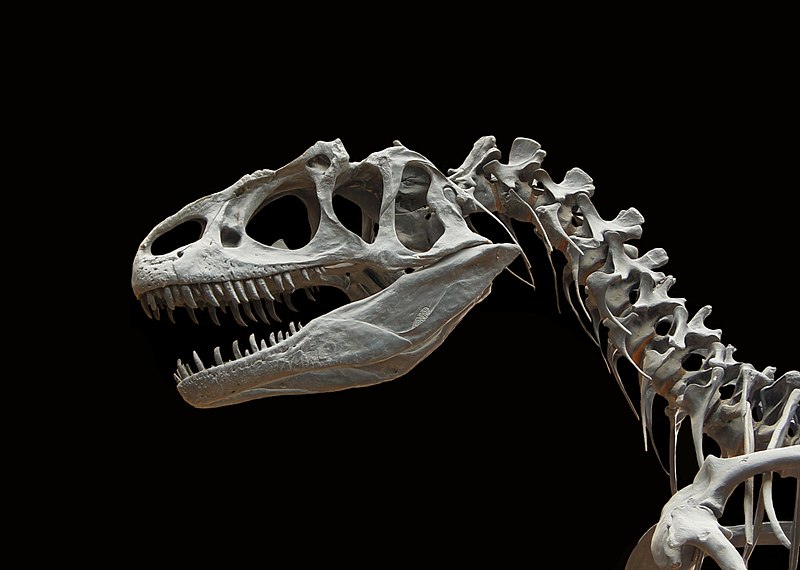
Common Name: Theropod Dinosaur
Scientific Name: Allosaurus fragilis
Age: Jurassic
First Discovered: 1877
The Allosaurus is yet another dinosaur first discovered by Othniel C. Marsh in the late 1800s. Measuring nearly 40 feet in length, this enormous predator’s name means “different lizard”.
This name was given due to the fact that this reptile’s vertebrae had hollow spaces, similar to present-day birds. This made the Allosaurus lighter and faster. This fossil was named one of Utah’s state symbols in 1988.
Vermont State Fossil
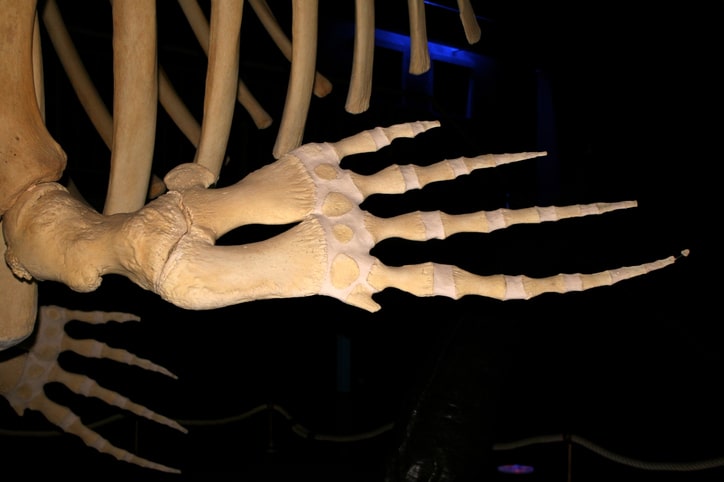
Common Name: Charlotte Whale and Mount Holly Mammoth
Scientific Name: Delphinapterus leucas and Mammuthus primigenius
Age: Pleistocene
First Discovered: 1848/1849
Vermont is another state that has assigned two state fossils.
The first is called the Charlotte Whale— a white beluga whale found in Charlotte, Vermont in 1849 by Zadock Thompson. While endangered, this animal has never actually gone extinct, making it the only state fossil that features a living species. This became Vermont’s marine fossil in 1993.
The state’s terrestrial fossil is the Mount Holly Mammoth, the same genus and species as Alaska and Nebraska’s state fossils. This creature was actually discovered a year prior to the beluga, but it didn't become an official symbol of Vermont until 2014.
Virginia State Fossil
Common Name: Bivalve
Scientific Name: Chesapecten jeffersonius
Age: Miocene to Pliocene
First Discovered: 1687
In true form and fashion, the location of the first English settlement in North America is also the first place that an American fossil was documented.
The Chesapecten jeffersonius was documented in 1687 by Martin Lister and it was later named after Thomas Jefferson. This makes this bivalve the obvious choice for a state fossil. It was designated as such in 1993. These fossilized shells once housed an ancient type of scallop.
Washington State Fossil
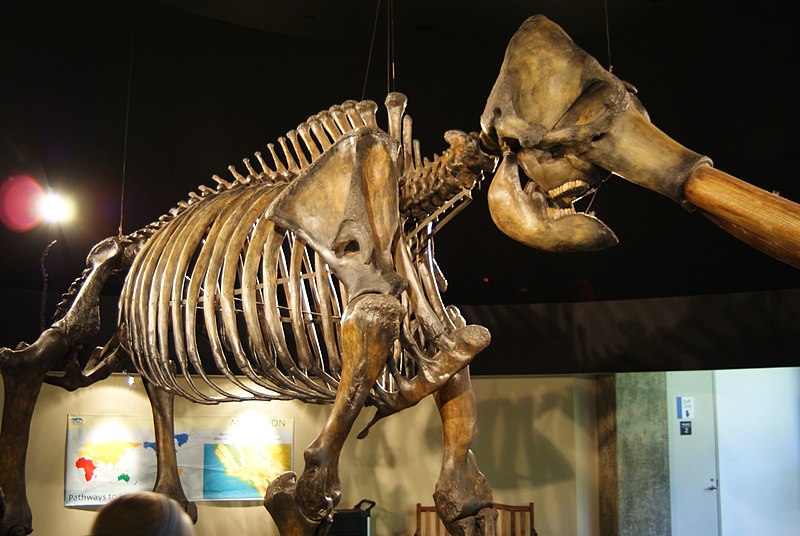
Common Name: Columbian Mammoth
Scientific Name: Mammuthus columbi
Age: Pleistocene
First Discovered: 1876
The Columbian Mammoth is a popular fossil choice and was chosen as Washington state’s official fossil in 1998. Benjamin Coplen found bones from this prehistoric elephant back in 1876.
However, the name of this mammoth was first coined by Hugh Falconer who found remains in Georgia in 1857. It was chosen to honor Christopher Columbus.
West Virginia State Fossil
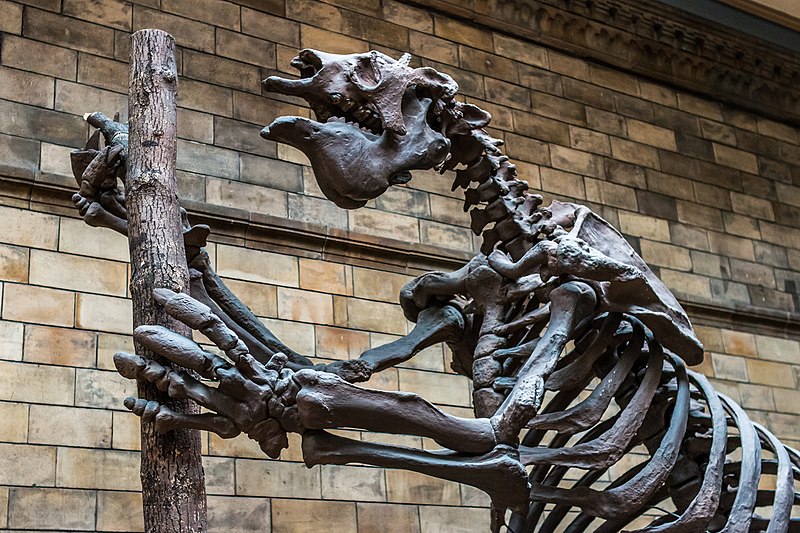
Common Name: Ground Sloth
Scientific Name: Megalonyx jeffersoni
Age: Pleistocene
First Discovered: 1797
It turns out that the animated movie "Ice Age" was somewhat accurate in its depiction of ancient creatures. The Megalonyx jeffersonii was a giant ground sloth that weighed just under 10,000 pounds and stood at an impressive 12 feet in height when standing on its hind legs.
This creature gained its genus name from President Thomas Jefferson himself. The species' name was later chosen by Casper Winstar in honor of this fossil-loving president. This large herbivore became the state fossil in 2008.
Wisconsin State Fossil
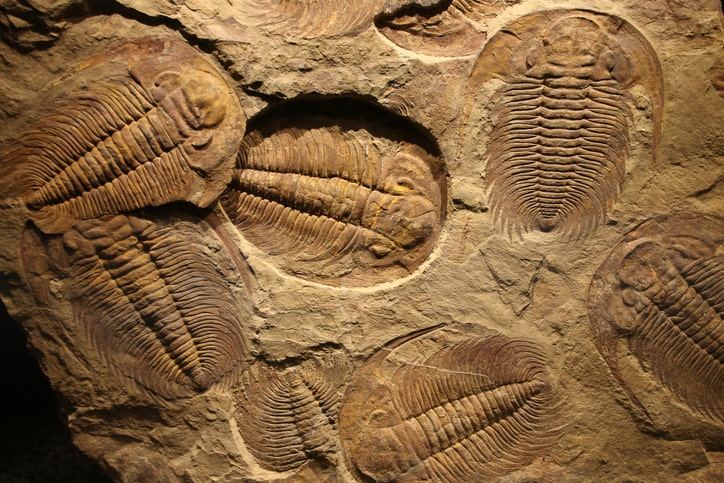
Common Name: Trilobite
Scientific Name: Calymene celebra
Age: Silurian
First Discovered: 1830s
Chosen as the state fossil in 1985, Wisconsin is one of four states to designate a trilobite as one of their state symbols. The Calymene celebra was first found in the Badger State in the 1830s by Increase Lapham.
This type of ancient arthropod is the smallest of the trilobite state fossils, measuring a mere two inches in length.
Wyoming State Fossil
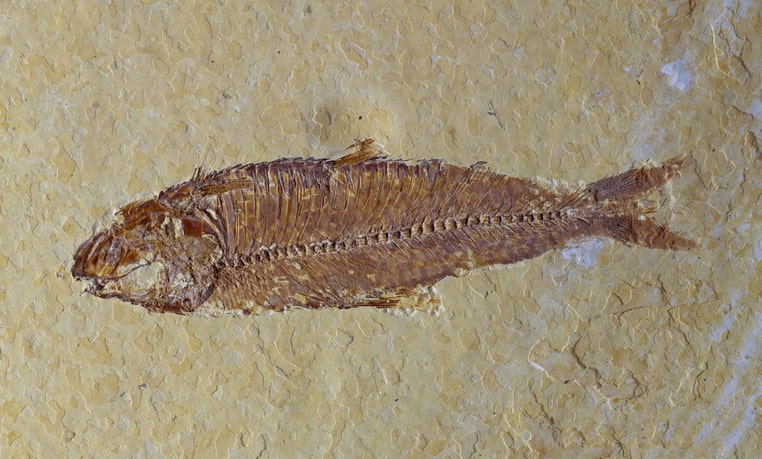
Common Name: Fish
Scientific Name: Knightia eocaena
Age: Eocene
First Discovered: 1840s
This ancient freshwater fish became the state fossil of Wyoming in 1987. These aquatic creatures can be found preserved in the limestone of the Green River Formation. They were originally discovered in the 1840s.
These fish measured less than a foot in length and were known for their bony scales. The Knightia is related to a present-day herring.
Fossils of Dinos and Plants, Oh My!
Clearly, Mammoths, Mastodons, and trilobites were quite common in this part of the world, but these American state fossils represent just a few of the array of ancient creatures that roamed the earth millions of years ago.
Are you an expert on the extinct? Test your knowledge by taking this Dinosaur Quiz!
About the author







